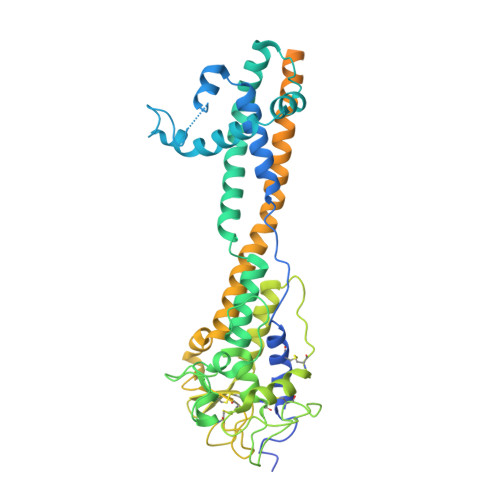Immunodominant surface epitopes power immune evasion in the African trypanosome.
Gkeka, A., Aresta-Branco, F., Triller, G., Vlachou, E.P., van Straaten, M., Lilic, M., Olinares, P.D.B., Perez, K., Chait, B.T., Blatnik, R., Ruppert, T., Verdi, J.P., Stebbins, C.E., Papavasiliou, F.N.(2023) Cell Rep 42: 112262-112262
- PubMed: 36943866
- DOI: https://doi.org/10.1016/j.celrep.2023.112262
- Primary Citation of Related Structures:
7P56, 7P57, 7P59, 7P5A, 7P5B, 7P5D - PubMed Abstract:
The African trypanosome survives the immune response of its mammalian host by antigenic variation of its major surface antigen (the variant surface glycoprotein or VSG). Here we describe the antibody repertoires elicited by different VSGs. We show that the repertoires are highly restricted and are directed predominantly to distinct epitopes on the surface of the VSGs. They are also highly discriminatory; minor alterations within these exposed epitopes confer antigenically distinct properties to these VSGs and elicit different repertoires. We propose that the patterned and repetitive nature of the VSG coat focuses host immunity to a restricted set of immunodominant epitopes per VSG, eliciting a highly stereotyped response, minimizing cross-reactivity between different VSGs and facilitating prolonged immune evasion through epitope variation.
Organizational Affiliation:
Division of Immune Diversity, German Cancer Research Center, 69120 Heidelberg, Germany; Faculty of Biosciences, University of Heidelberg, 69120 Heidelberg, Germany; Panosome GmbH, 69123 Heidelberg, Germany.
















